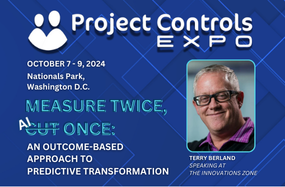
Integrated Project Delivery in the AEC Sector with Synchro

Integrated Project Delivery in the AEC Sector with Synchro
Traditional project delivery or integrated project delivery, which should you choose? Traditional project delivery (TPD) may fast be turning into yesterday’s model with its information and management silos, risk refusal and consequent finger-pointing. The alternative is integrated project delivery (IPD), which puts the emphasis on shared information, collaboration and risk and reward sharing. A side by side comparison of TPD and IPD can be made as follows:
|
TPD
|
IPD
|
The Information Organization Challenge for IPD
The collaborative team that drives integrated project delivery is made up of people from different organizations. IPD has also been found to work best when project stakeholders, architects, engineers and construction partners move beyond their traditional roles to work together more openly and more interactively. They need to share information amongst each other, yet keep that information confidential with respect to the outside world. A digital approach is likely to work best. However, conventional IT solutions cannot always manage the different file types, synchronize data and allow information to be viewed without imposing on users the installation of other software applications.
Creating the Work Environment through SaaS
An online solution (SaaS or Software as a Service) designed with IPD in mind allows a team to resolve the information-related issues above. Data can be guaranteed to be up to date and accessible from one central location. This includes documents, construction plans, project schedules, communications trails or other records required for running the project. Online building information modeling (BIM) in particular allows immediate views of the project, including current and projected status. Secure hosted centralization of the application can also offer a further important benefit: the IPD project information is shared between team members, without any one organization asserting control or monopolizing the process.
Synchro as a Platform for Integrated Project Delivery
Synchro Professional™ provides a collaborative software platform to enable IPD. The application offers visual awareness and animation as part of its project planning, scheduling and 4D/5D BIM capabilities. Synchro also eases the migration from TPD to IPD working by integrating with different legacy systems and also offers data exchange with Oracle Primavera. Healthcare facilities, high-rise towers, roads and bridges, industrial processes, oil and gas, marine and mining projects are all examples of projects successfully concluded by using Synchro. By hosting Synchro in its Cloud-based Project Management portal, SpringBoard™, LoadSpring™ helps boost project team efficiency and effectiveness
How Does Investment in IPD Compare with TPD?
Economic and organizational pressures are pushing customers and contractors to look for better ways to achieve architecture, engineering and construction success. Lean construction methods should help avoid waste and delay. Unfortunately, traditional project delivery often blocks the possibilities for lean processes. Collaborative IPD with a good online PM/BIM solution such as LoadSpring-hosted Synchro opens the door to greater savings and better returns on investment.








